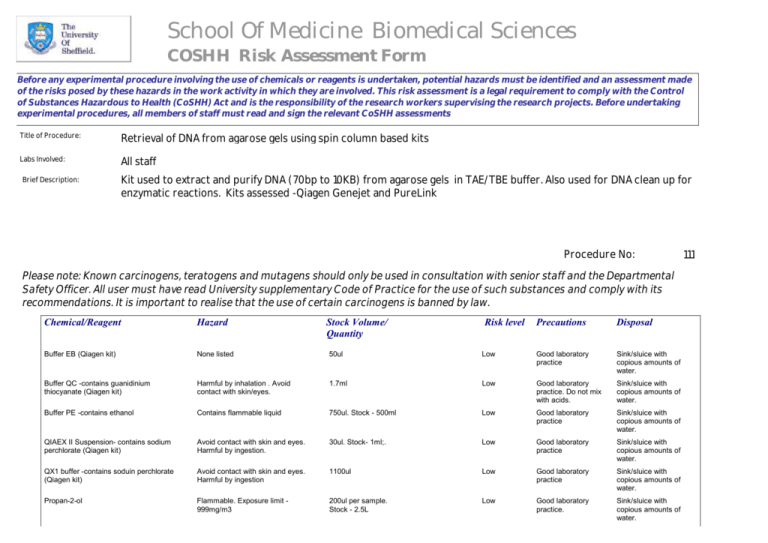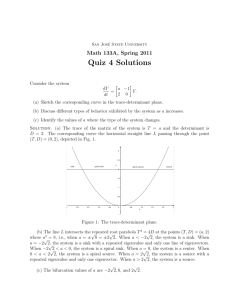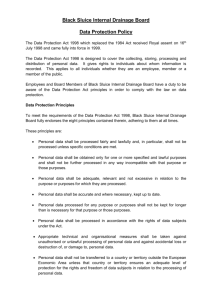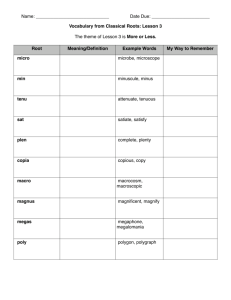School Of Medicine Biomedical Sciences
advertisement

School Of Medicine Biomedical Sciences COSHH Risk Assessment Form Before any experimental procedure involving the use of chemicals or reagents is undertaken, potential hazards must be identified and an assessment made of the risks posed by these hazards in the work activity in which they are involved. This risk assessment is a legal requirement to comply with the Control of Substances Hazardous to Health (CoSHH) Act and is the responsibility of the research workers supervising the research projects. Before undertaking experimental procedures, all members of staff must read and sign the relevant CoSHH assessments Title of Procedure: Retrieval of DNA from agarose gels using spin column based kits Labs Involved: All staff Brief Description: Kit used to extract and purify DNA (70bp to 10KB) from agarose gels in TAE/TBE buffer. Also used for DNA clean up for enzymatic reactions. Kits assessed -Qiagen Genejet and PureLink Procedure No: Please note: Known carcinogens, teratogens and mutagens should only be used in consultation with senior staff and the Departmental Safety Officer. All user must have read University supplementary Code of Practice for the use of such substances and comply with its recommendations. It is important to realise that the use of certain carcinogens is banned by law. Chemical/Reagent Hazard Stock Volume/ Quantity Buffer EB (Qiagen kit) None listed 50ul Buffer QC -contains guanidinium thiocyanate (Qiagen kit) Harmful by inhalation . Avoid contact with skin/eyes. Buffer PE -contains ethanol Risk level Precautions Disposal Low Good laboratory practice Sink/sluice with copious amounts of water. 1.7ml Low Good laboratory practice. Do not mix with acids. Sink/sluice with copious amounts of water. Contains flammable liquid 750ul. Stock - 500ml Low Good laboratory practice Sink/sluice with copious amounts of water. QIAEX II Suspension- contains sodium perchlorate (Qiagen kit) Avoid contact with skin and eyes. Harmful by ingestion. 30ul. Stock- 1ml;. Low Good laboratory practice Sink/sluice with copious amounts of water. QX1 buffer -contains soduin perchlorate (Qiagen kit) Avoid contact with skin and eyes. Harmful by ingestion 1100ul Low Good laboratory practice Sink/sluice with copious amounts of water. Propan-2-ol Flammable. Exposure limit 999mg/m3 200ul per sample. Stock - 2.5L Low Good laboratory practice. Sink/sluice with copious amounts of water. 111 Procedure No: Buffer ERC flammable, harmful if swallowed, irritating to eyes and skin 1 kit Medium do not handle near naked flames and sources of heat, wear gloves and eye protection down sink with copious amts of water GelPiolt x5 loading dye not hazardous 1kit Low none down sink with copious amounts of water Binding buffer - contains water, guanidinium thiocyanate and potassium acetate (Genejet kit) Harmful Stock -30ml Use 100ul per Low Good laboratory practice. Do not mix with acids. Sink/sluice with copious amounts of water Wash buffer - contains ethanol (Genejet kit) Flammable Stock-9ml Use 700ul per Low Good laboratory practice Sink/sluice with copious amounts of water Elution buffer - 10mm Tris-Hcl solution None listed Stock - 15ml Use up to 50ul per Low Good laboratory practice Sink./sluice with copious amounts of water Sodium acetate Not classed as hazardous Stock -250g Use 10ul 3M soln Low Good laboratory practice Sink/sluice with copious amounts of water Ethanol, absolute Flammable. Exposure limit 1920mg/m3 or 1000ppm Stock -2.5L Use 45ml make wash Low Good laboratory practice Sink/sluice with copious amounts of water PureLink Gel extraction kit Non hazardous apart from Gel stabilisation buffer -harmful if swallowed 1 kit Low none down sink with copious amount sof water 111 Procedure No: Good Laboratory Practice should be adhered at all times • Common sense at all times! • Never eat, drink or apply cosmetics in the laboratory. • Wash your hands in the designated sinks whenever you have finished your lab work. • Be familiar with the potential hazards involved in your work and take appropriate precautions. • Wear protective clothing as needed, lab coats are a minimum. • Keep your work area clean and tidy. • Dispose of materials appropriately. • Use appropriate care with electrical equipment. • Use appropriate care with sharps • Use appropriate care with substances of extreme temperatures (liquid nitrogen or hot liquids) • Operate maintain and service all your equipment properly, if in doubt ask! • Work in appropriate containment hoods where necessary. Precautions to be taken: EMERGENCY PROCEDURES – FIRST AID IF PERSONNEL ARE AFFECTED (fumes, contamination/contact) TREATMENT TO BE ADOPTED EYES Irrigate with eye wash for at least 10 minutes. Obtain medical attention. LUNGS Remove from exposure. Rest and keep warm. In severe cases obtain medical attention. SKIN Drench skin with water. Remove contaminated clothing. In severe cases seek medical attention. MOUTH Wash mouth out thoroughly and give very small SIPS of water. Do not induce vomiting. Obtain medical attention. Special Precautions: Buffer QC will liberate very toxic gas when in contact with acids.Do not add bleach or acidic solutions directly to the sample preparation waste. Assessed by: V. Singleton Date: 26/06/2013 Approved by Y. Stephenson Date approved: 23/04/2013 111







